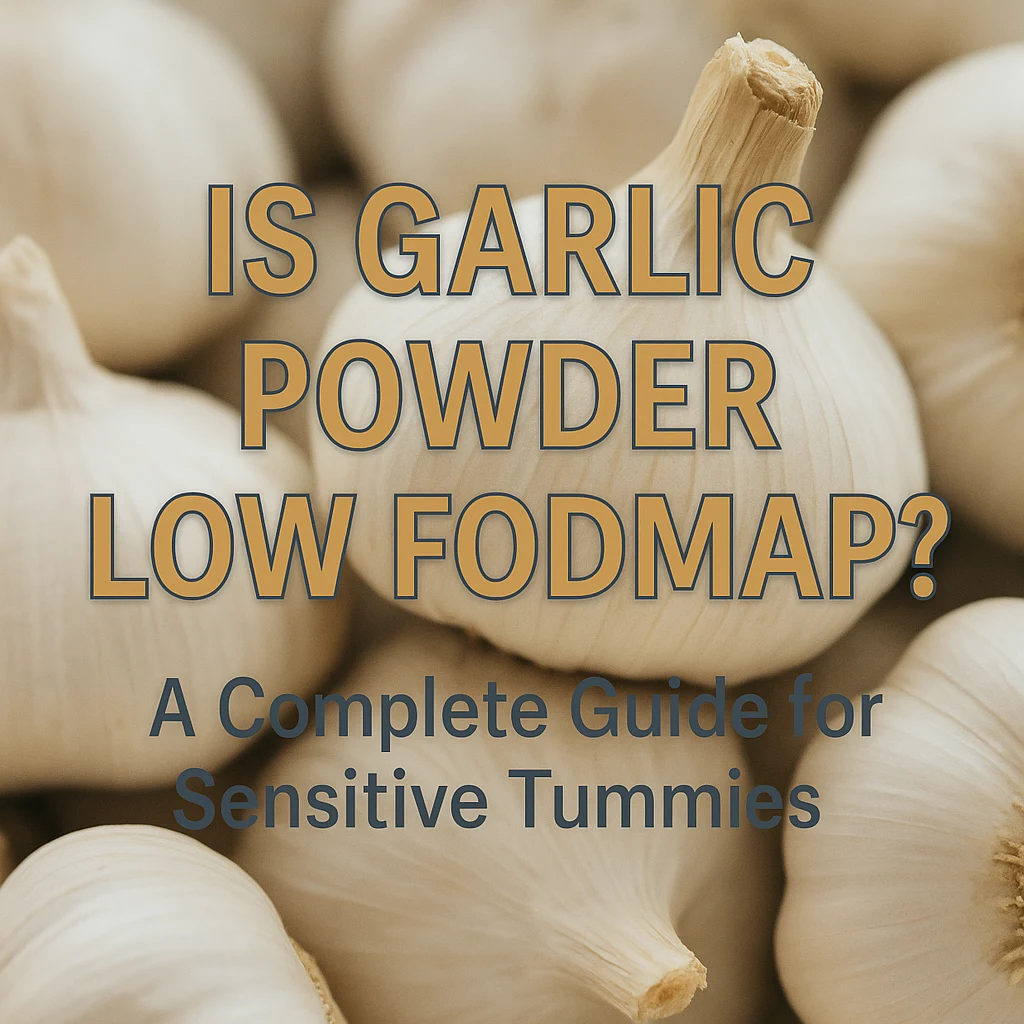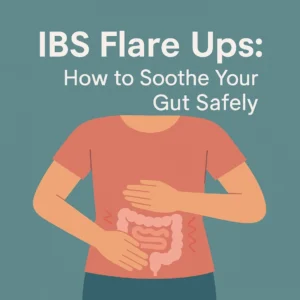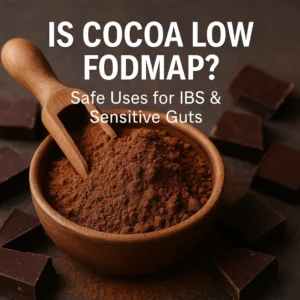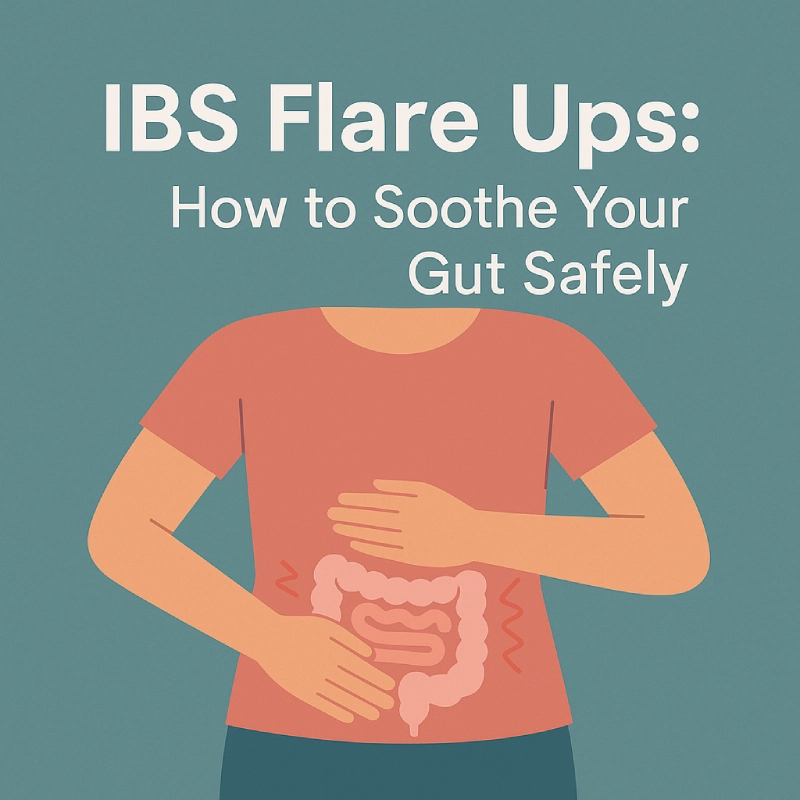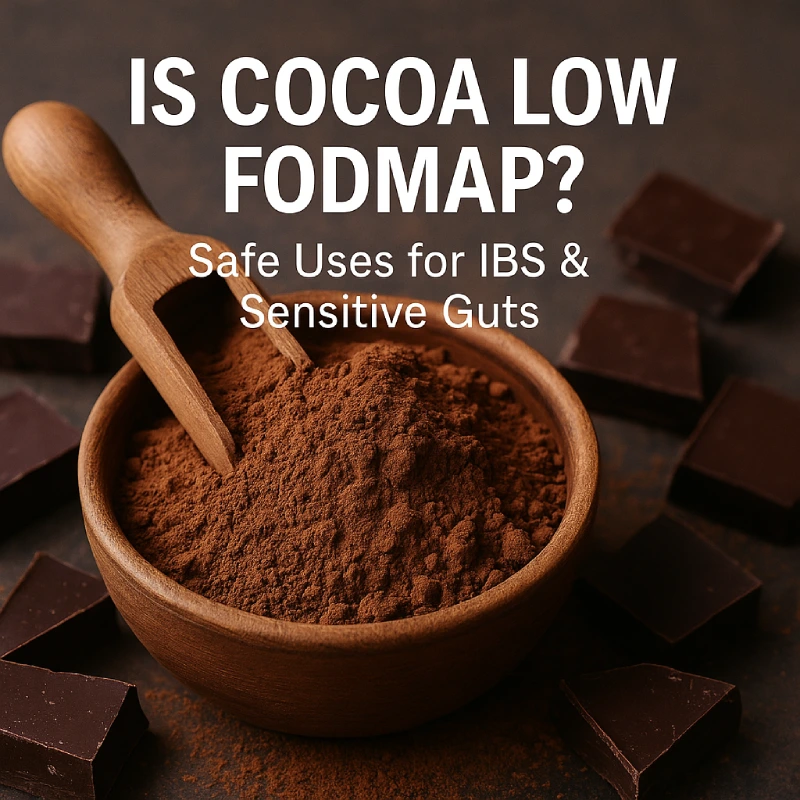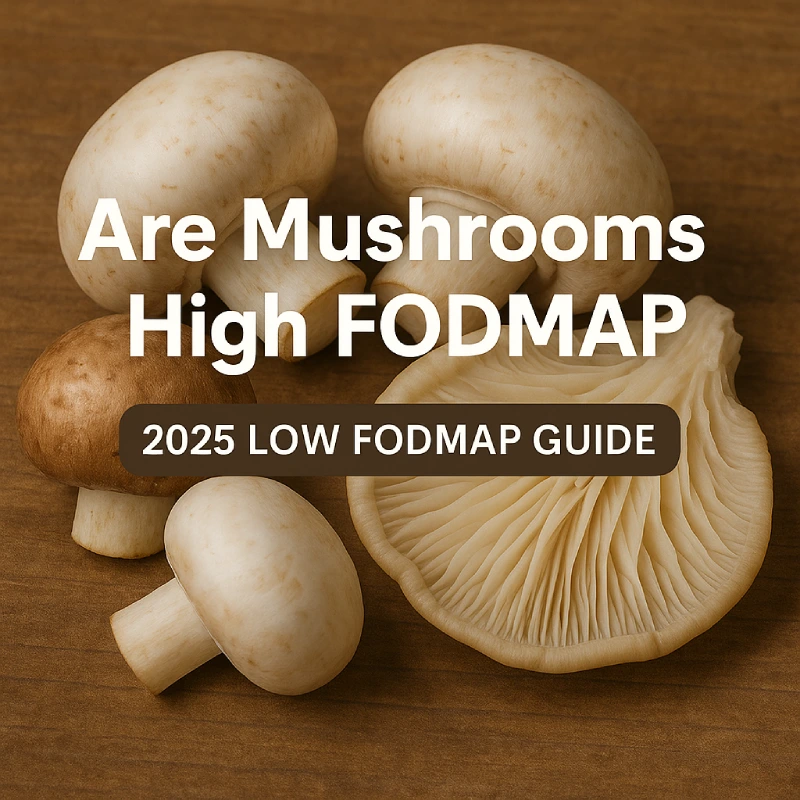If you live with irritable bowel syndrome (IBS) or struggle with bloating and digestive discomfort, you’ve probably asked yourself: is garlic powder low FODMAP? Garlic is one of the most common triggers for IBS symptoms, yet it’s also one of the most beloved ingredients in kitchens worldwide. The good news is that there are ways to enjoy its flavour without sacrificing your comfort.
In this article, we’ll explore what Monash University, the world leaders in FODMAP research, say about garlic and garlic powder, what alternatives exist, and how you can safely bring back flavour into your meals without triggering symptoms.
Table of Contents
Why is garlic such a problem for people with IBS?
Garlic, in all its forms, is naturally high in fructans. Fructans belong to the oligosaccharide family of FODMAPs; short-chain carbohydrates that are poorly absorbed in the small intestine. When they reach the large intestine, gut bacteria ferment them quickly, leading to gas, bloating, cramping, and changes in bowel movements.
Monash University has repeatedly tested garlic and confirmed that both raw and cooked garlic remain high in fructans even in small amounts. This means that, unfortunately, there isn’t a “safe” portion of raw or powdered garlic you can freely enjoy on a strict low FODMAP diet.
So, is garlic powder low FODMAP?
The short answer is no. Garlic powder is not low FODMAP because it is simply dehydrated garlic, and the fructans remain present. In fact, powdered or granulated garlic can sometimes feel more concentrated, which means even tiny amounts may trigger symptoms.
Monash University confirms that garlic (and therefore garlic powder) is still considered high FODMAP at any standard serving. Unlike some vegetables that were reclassified as low FODMAP in small amounts in the 2025 update (such as Brussels sprouts or cauliflower), garlic has not changed.
Can you ever use garlic powder on a low FODMAP diet?
This is where it gets interesting. While garlic powder itself isn’t low FODMAP, you do have a few clever strategies to enjoy garlic flavour without the symptoms:
1. Garlic-infused oil
Fructans are not soluble in fats, which means you can cook garlic in oil, strain it out, and still enjoy the rich flavour in the oil without the FODMAPs. Monash University has tested garlic-infused oil and confirmed it is safe and low FODMAP.
2. Green parts of garlic chives or spring onions
While the bulb is high in fructans, the green tops of garlic chives or spring onions are low FODMAP and can be used generously to mimic a mild garlic flavour.
3. Asafoetida powder
This spice, commonly used in Indian cuisine, offers a pungent, garlicky note when used in tiny amounts. It is considered low FODMAP in the small quantities typically used for seasoning.
It’s worth knowing that asafoetida has a very strong smell straight from the jar; some describe it as sulphurous or even unpleasant. But don’t let that put you off. Once it’s added to hot oil and cooked for a few seconds, the harsh aroma mellows into a flavour remarkably similar to garlic and onion, making it a fantastic addition to low FODMAP cooking.
How do fructans in garlic affect digestion?
Garlic is one of the richest sources of fructans. When you eat garlic or garlic powder, the fructans bypass digestion in the small intestine and travel to the colon, where bacteria ferment them. This fermentation process produces gas, which can cause:
- Bloating
- Abdominal pain or cramping
- Diarrhoea or constipation
- Excessive wind
For people with IBS, these symptoms can appear quickly after eating garlic, which is why even trace amounts in sauces, marinades, or spice blends may be problematic.
Why doesn’t everyone react the same way?
Not everyone with IBS reacts equally to fructans. Some people tolerate very small amounts without discomfort, while others are highly sensitive. This is why Monash recommends a reintroduction phase after the elimination period, to test your personal tolerance. However, garlic and garlic powder are usually poorly tolerated by most.
Are there “hidden” sources of garlic powder?
Yes. Many packaged foods (including spice mixes, soups, sauces, and marinades) use garlic powder as a flavouring. Learning to read ingredient lists carefully is key when following a low FODMAP diet.
What does Monash University recommend instead of garlic powder?
Monash’s research is clear: avoid garlic powder during the elimination phase of the low FODMAP diet. Instead, they encourage flavour substitutions that don’t compromise gut comfort.
Garlic-infused oil
As mentioned earlier, this is the safest and most effective way to capture garlic flavour without FODMAPs. You can buy certified low FODMAP garlic oils or make your own by gently warming whole garlic cloves in oil, then straining them out.
Fresh herbs and spices
Oregano, thyme, rosemary, basil, and smoked paprika can all add depth of flavour to meals, helping you rely less on garlic powder.
Onion and garlic substitutes
Monash highlights spring onion greens, leek greens, and garlic chives as excellent alternatives. These can bring a similar aromatic note while being low in FODMAPs.
Creative alternatives to garlic powder
If you miss the richness garlic brings to your cooking, you’ll be glad to know there are several creative, low FODMAP options to play with.
Citrus zest for brightness
Lemon or lime zest can lift a dish in the same way garlic does, especially in marinades and dressings.
Miso paste (in moderation)
Small servings of miso paste are low FODMAP and bring a savoury depth often associated with garlic.
Roasted red peppers
These can add a sweet, smoky depth that pairs well with herbs and mimics the warmth that garlic adds to sauces.
Cumin and coriander seeds
When toasted and ground, these spices add complexity and depth of flavour that can help fill the gap garlic powder leaves.
Ginger and turmeric
Both spices not only enhance flavour but also offer potential anti-inflammatory benefits; ideal for gut-friendly cooking.
Practical cooking tips to replace garlic powder
- In stir-fries: use garlic-infused oil as your base, then add ginger and spring onion greens.
- In soups and stews: start with carrots, celery (small serve), and leek greens for a flavourful base.
- In salad dressings: mix lemon zest, garlic-infused oil, and herbs for a fresh, tangy kick.
- In roasted dishes: rub meat or vegetables with cumin, coriander, and smoked paprika instead of garlic powder.
With these tricks, you won’t feel like you’re missing out.
Linking it together: Garlic, onion, and beyond
Garlic and onions often come hand in hand in recipes. If you’re wondering about onions, I’ll cover that in detail in a dedicated article: Is onion powder low FODMAP?
And if you’d like a broader view of flavour-building, I’ve created a guide with practical swaps: Best substitutes for onion and garlic on a low FODMAP diet.
FAQs about Garlic Powder and the Low FODMAP Diet
Is garlic powder low FODMAP?
No. Garlic powder is high FODMAP because it contains concentrated fructans.
Can I use garlic salt instead?
No. Garlic salt is usually garlic powder mixed with salt, so it still contains fructans.
Is roasted garlic powder different?
Unfortunately not. Roasting changes flavour but doesn’t reduce fructan content.
What about garlic extract or essence?
Unless it’s in an oil base and certified low FODMAP, garlic extracts typically still contain fructans.
Can I reintroduce garlic later?
Yes, but only after the elimination phase. Use Monash’s reintroduction protocol to test your tolerance carefully.
What’s the best substitute for garlic powder?
Garlic-infused oil, garlic chives, and spring onion greens are the safest and most flavourful alternatives.
What herbs work best in place of garlic?
Oregano, rosemary, thyme, basil, and smoked paprika can all add depth without triggering symptoms.
Can I eat food with “natural flavourings” if garlic isn’t listed?
It’s best to check with the manufacturer. “Natural flavourings” can sometimes include garlic or onion derivatives.
Gentle reminder
Remember, the low FODMAP diet is not meant to be followed forever. Its purpose is to help you identify your triggers and then slowly reintroduce foods to build a varied, balanced diet. Garlic may be a lifelong trigger for some, but for others, small amounts may be tolerated. Listening to your body is key.

